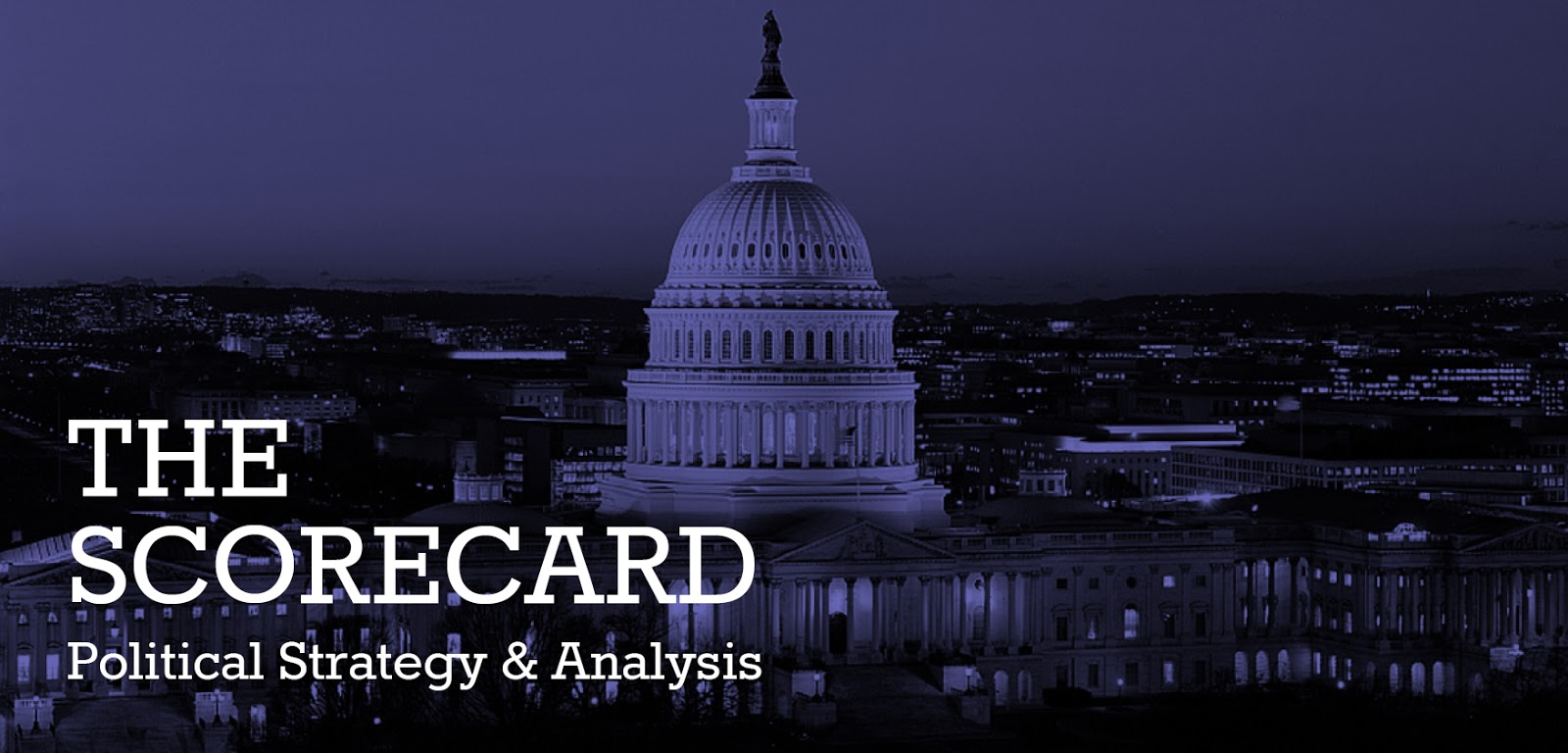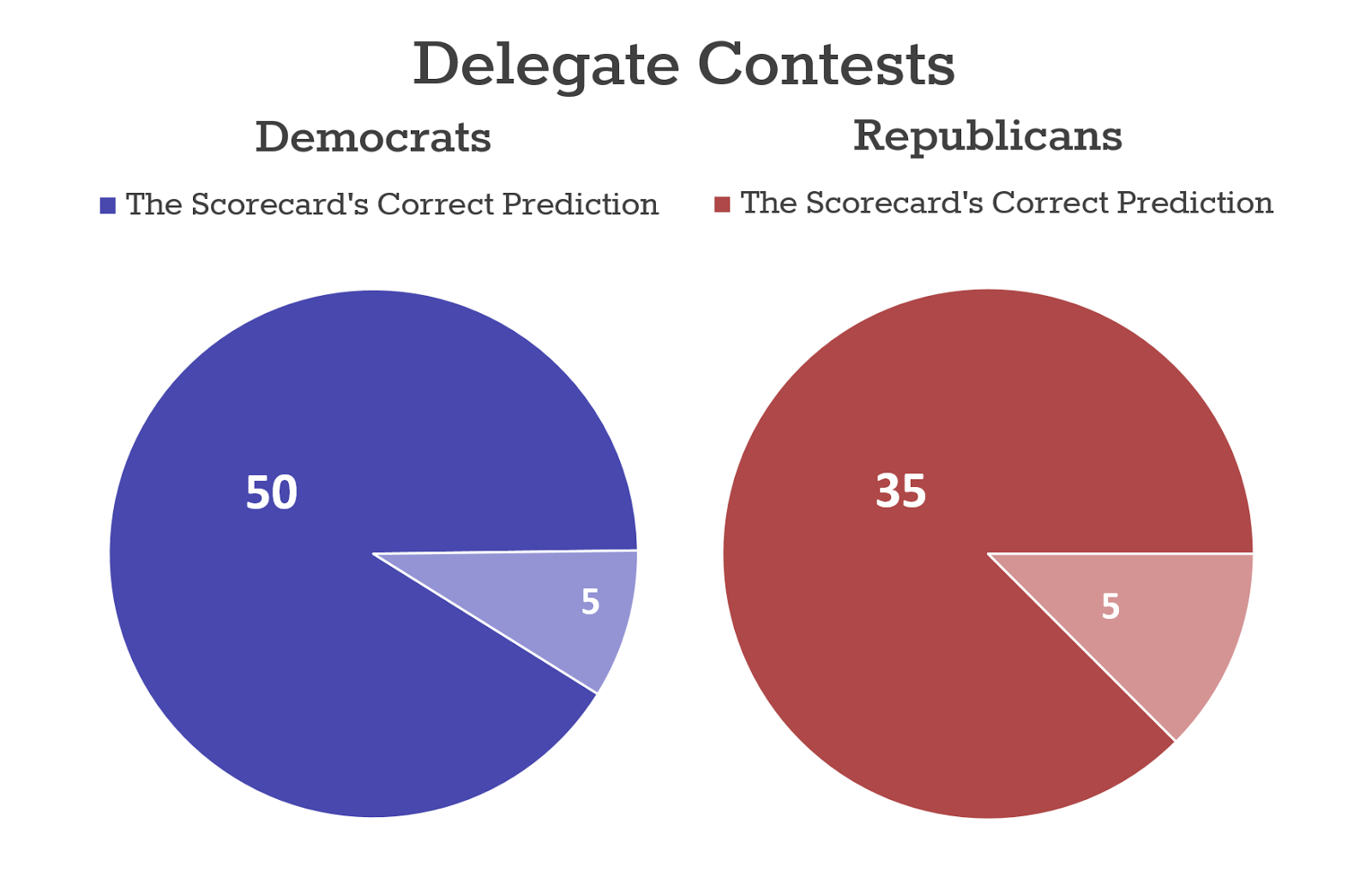State Wins
Trump: Alabama, Alaska, Arkansas, Georgia, Massachusetts, Minnesota, Oklahoma, Tennessee, Virginia, Vermont, WyomingCruz: Texas
Rubio: 0
Kasich: 0
Carson: 0
Delegate Total
Trump: 272Cruz: 200
Rubio: 124
Kasich: 16
Carson: 6
Explanation
These numbers, unlike those on the Democratic side, can shift a lot. The result to watch is the thresholds. Alabama, Georgia, Tennessee and Texas all have statewide threshold of 20%. Cruz and Rubio are flirting with missing cutoffs in a few places. At the moment, it looks like Rubio will fall below threshold in Texas. It is incredibly close. He is at 17.6% in the polling average and he seems to have a down arrow in the state. Cruz is at risk in Alabama, Georgia, and Tennessee but we think he gets there. If anyone misses threshold in any state, it gives more delegates to other two who reached threshold.Rubio beats Cruz for delegates outside of Texas, but Texas is a huge haul for Cruz. There are also going to be a lot of close races for second place and delegates in a number of districts.[Thresholds can be missed here too, in which cases delegates go to Trump. These numbers can swing a bit back and forth. But overall it’s looking like a good night for Trump.
Full Delegate Allocation, State by State
ALABAMA
Total: Trump 27, Rubio 12, Cruz 11
At Large: Trump, 13 Rubio 8, Cruz 8
CD 1: Trump 2, Rubio 1
CD 2: Trump 2, Rubio 1
CD 3: Trump 2, Cruz 1
CD 4: Trump 2, Cruz 1
CD 5: Trump 2, Cruz 1
CD 6: Trump 2, Rubio 1
CD 7: Trump 2, Rubio 1
ALASKA
All At Large: Trump 11, Cruz 8, Rubio 7
ARKANSAS
Total: Trump 20, Cruz 10, Rubio 10
At Large: Trump 12, Cruz 8, Rubio 8
CD 1: Trump 2, Rubio 1
CD 2: Trump 2, Rubio 1
CD 3: Trump 2, Cruz 1
CD 4: Trump 2, Cruz 1
COLORADO
Total: 37 delegates (delegates are selected who are pledged to candidates and who will go forward to other conventions but the voting results are not disclosed)
GEORGIA
Total: Trump 41, Rubio 19, Cruz 16
At Large: Trump 13, Rubio 11, Cruz 10
CD 1: Trump 2, Rubio 1
CD 2: Trump 2, Cruz 1
CD 3: Trump 2, Cruz 1
CD 4: Trump 2, Cruz 1
CD 5: Trump 2, Rubio 1
CD 6: Trump 2, Rubio 1
CD 7: Trump 2, Rubio 1
CD 8: Trump 2, Cruz 1
CD 9: Trump 2, Cruz 1
CD 10: Trump 2, Rubio 1
CD 11: Trump 2, Rubio 1
CD 12: Trump 2, Rubio 1
CD 13: Trump 2, Rubio 1
CD 14: Trump 2, Cruz 1
MASSACHUSETTS
Total (All at large): Trump 19 Rubio 9 Kasich 6 Cruz 5 Carson 2
MINNESOTA
Total: Trump 14, Cruz 12, Rubio 12
At large: Trump 6, Rubio 4, Cruz 4
8 Districts: All split 3 ways for 8 delegates apiece
OKLAHOMA
Total: Trump 17, Rubio 13, Cruz 13
At Large: Trump 12, Rubio 8, Cruz 8
CD 1: Trump 1, Rubio 1, Cruz 1
CD 2: Trump 1, Rubio 1, Cruz 1
CD 3: Trump 1, Rubio 1, Cruz 1
CD 4: Trump 1, Rubio 1, Cruz 1
CD 5: Trump 1, Rubio 1, Cruz 1
TENNESSEE
Total: Trump 32, Cruz 14, Rubio 12
At Large: Trump 14, Cruz 9 Rubio 8
CD 1: Trump 2, Cruz 1
CD 2: Trump 2, Cruz 1
CD 3: Trump 2, Rubio 1
CD 4: Trump 2, Rubio 1
CD 5: Trump 2, Rubio 1
CD 6: Trump 2, Cruz 1
CD 7: Trump 2, Cruz 1
CD 8: Trump 2, Cruz 1
CD 9: Trump 2, Rubio 1
TEXAS
Total: Cruz 93, Trump 52, Rubio 10
At Large: Cruz 21, Trump 16, Rubio 10
Texas Districts: Cruz first in all 36 districts for 72 delegates, Trump second for 36 delegates
VIRGINIA
Total (all at large): Trump 18, Rubio 14, Cruz 10, Kasich 5, Carson 2
VERMONT
Total (All at large): Trump 8, Rubio 5, Kasich 3
WYOMING
Total (All at large): Trump 8, Rubio 7, Cruz 7, Kasich 2, Carson 2



